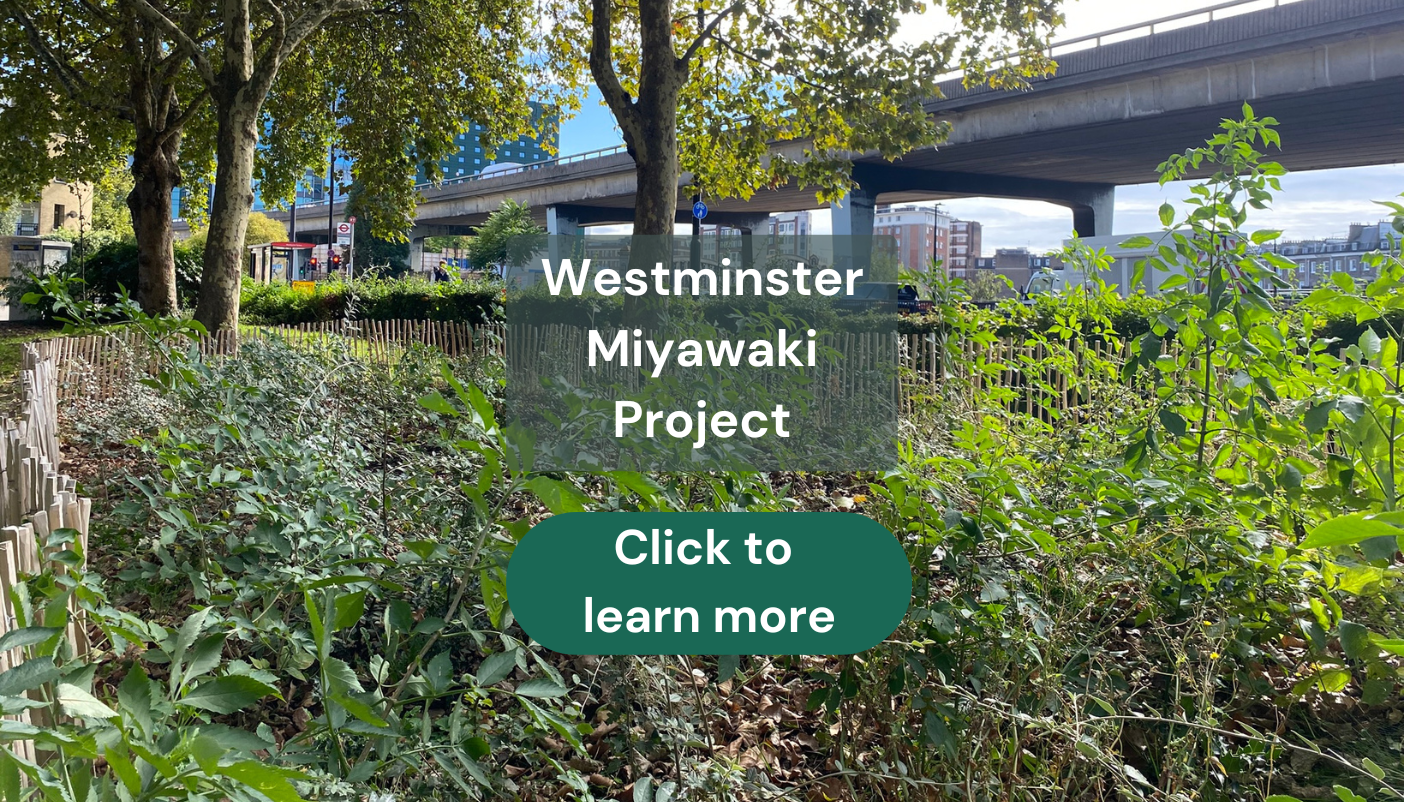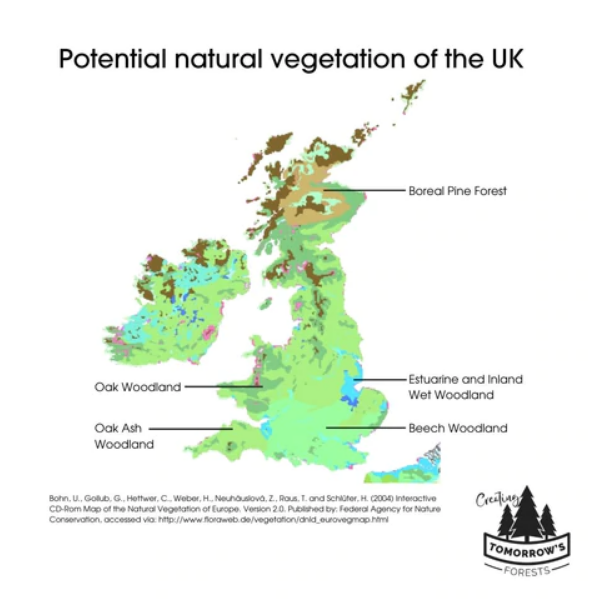The Miyawaki Method for Creating Forests
Miyawaki Method is one of the most effective tree planting methods

The Miyawaki Method is one of the most effective tree planting methods for creating forest cover quickly on degraded land that has been used for other purposes such as agriculture or construction. It is effective because it is based on natural reforestation principles, i.e. using trees native to the area and replicating natural forest regeneration processes. It has some significant benefits over more traditional forestry methods when used in smaller afforestation projects and is particularly effective in the urban environment. The trees planted by this method grow much faster, jump starting the forest creation process and capturing more carbon. Higher biodiversity has been recorded in Miyawaki forests than in neighbouring woodland, so it’s an ideal method for creating diverse forest ecosystems quickly. Within the context of the current climate change emergency and stark warnings about the global loss of biodiversity, being able to create diverse, healthy forests quickly could prove vital to meeting international targets and tackling these issues.

Miyawaki Method principles
The essential principle of the Miyawaki method is using species of trees that would occur naturally in that area and that work together to create a diverse, multi-layered forest community. This creates a resilient and thriving forest ecosystem with species that complement each other, restoring “native forests by native trees”. The selection of species to plant in a given area was originally linked to the theory of potential natural vegetation (PNV), in other words the vegetation that would occur in a specific area without further human interference. Extensive surveys have been carried out globally to determine the PNV across the world (see Hengl et al. 2018 for a summary), although there is fierce debate about the most effective way of defining ‘native’ species. In the UK the PNV is predominantly oak or oak/ash woodland, with beech woodland in the South East of England and boreal pine forest in Scotland. Estuarine and wet woodlands occur in specific habitats, particularly around The Wash and on the Somerset Levels. In spite of the inherent difficulties in defining native species, those that are adapted to local conditions (in the UK oak, willow, birch for example) will fare better and contribute more to increasing biodiversity than more recently introduced species (e.g horse chestnut, plane).

One of the most noticeable differences in a Miyawaki forest is that the seedlings are planted at very high densities. This replicates the regeneration process that occurs in a natural forest when a clearing in the canopy opens up due to a larger tree falling. The saplings grow very fast to compete for the light and then natural selection will favour the fastest growing individuals and act to thin out the trees. The result is a densely packed pioneer forest that grows in 20 to 30 years instead of taking 150 to 200 years. This has obvious benefits for projects that are working to maximise a forest’s carbon sequestration potential or recreate habitat for biodiversity and wildlife.

The history of the Miyawaki Method
The Miyawaki Method is named after its creator, Akira Miyawaki, a Japanese botanist and plant ecologist who has a particular interest in phytosociology, i.e. how plant species interact with each other within communities. Following the completion of a PhD in plant ecology, Miyawaki went to study with phytosociologist Reinhold Tüxen in Germany, where he learned about the concept of potential natural vegetation. When he returned to Japan and applied the PNV principles to the Japanese landscape, he became interested in the relics of ancient forests found around temples and shrines, known as Chinju-no-mori, sacred groves. These fragments of forest were composed of trees such as Japanese blue oak (Quercus glauca), Japanese chestnut (Castanea crenata) and Sakaki (Cleyera japonica), rather than the coniferous trees such as larch (Larix kaempferi) and Japanese cedar (Cryptomeria japonica), which had been introduced from other areas and dominated local forests. There was also a distinct layering in the forest structure, with slow-growing canopy species, tree layer species, smaller sub-tree layer species, shrubs and ground covering herbs.

When Miyawaki combined these concepts, he developed a new way of planting forests. This was based on the native vegetation that he postulated should be growing in that area, as deduced from PNV studies, and his understanding of how these species would interact and grow to produce a dynamic forest ecosystem. His early field trials showed great promise that this method could dramatically accelerate forest growth and result in a stable and diverse forest ecosystem. Since then Miyawaki forests have been successfully planted on more than 3000 sites globally.
How to plant forest using the Miyawaki Method
- Survey local forest fragments and identify PNV tree species that are best suited to the conditions
- Determine the forest community structure – identify the main canopy and tree layer species and select companion species based on their compatibility with the key species. This is assessed by looking at local indigenous vegetation and analysis of forest structures elsewhere in the world
- Conduct a soil survey to help decide on the type of mulch and soil nutrients required
- Collect seeds from local trees to grow seedlings or obtain seedlings of local variants of tree species. There are specific recommendations for how to raise the seedlings including growing them under shaded covers
- Apply a mulch made from local materials to protect and nourish the seedlings – this simulates the protection offered by humus / leaf litter in a natural forest
- Treat the soil and the seedlings with soil improvers or a mycorrhizal improver
- Plant the seedlings randomly and at high density, 20,000 to 30,000 per hectare instead of 1,000 per hectare, with stakes for support
- Water regularly and keep the site weed free for the first 2 years

What are the benefits?
- Trees in a Miyawaki forest grow up to ten times faster at around a metre per year, reaching a stable multi-layered forest community in 20 to 30 years instead of hundreds of years
- The growing trees absorb more carbon in a Miyawaki forest than in a plantation or in standard afforestation projects because they grow more quickly and there are thirty times as many
- The Miyawaki method has been successful where other planting projects have failed, such as in arid Mediterranean habitats, due to high survival rates
- Native trees thrive in the conditions to which they are adapted and are more resilient to environmental changes
- Miyawaki forests have been found to have far higher biodiversity than neighbouring woodland, on average 18 times higher

Applications of the Miyawaki Method
The Miyawaki Method has been used successfully around the world in over 3000 projects and the numbers are now also rising in Europe. The ability to create a dense native forest quickly has made the technique useful for creating urban micro forests, for restoring rainforest and Japanese evergreen broadleaf forests and for planting in arid Mediterranean habitat where other forestry techniques have not been successful. Miyawaki forests have also proven effective when used for a specific purpose, such as providing tsunami protection, stabilising mine dump slopes, as typhoon protection and for carbon sequestration. There has been particular focus on planting Miyawaki forests in urban environments as there are significant benefits to tree planting in towns and cities, and this method maximises the space available. Urban forests reduce local temperatures (-1.3°C in one study), improve air quality by reducing pollutants, sequester carbon, and improve the wellbeing of residents, as well as creating a natural oasis for invertebrates and birds. There remains, however, much scope for research on the Miyawaki method. In particular the carbon sequestration rates could be significantly higher than on forest plantations because of the density both at planting and at the final forest stage.

Criticism of technique
There has been significant criticism of the concept of Potential Natural Vegetation, although very little of the Miyawaki Method itself. In particular, the idea of using fixed compositions of vegetation has garnered criticism because ecosystems are not static. There is no denying, however, that having a concept of the best adapted vegetation to a particular area can help afforestation projects to create forests that benefit native wildlife. Many research studies still use PNV as a tool to identify potential species that would be expected to occur in an area, whilst also acknowledging its limitations.
The Miyawaki method itself has been criticised for creating forests that look monotonous because the trees are all the same age. However, the diversity inherent in the planting and the biodiversity recorded at the sites demonstrate that a functioning ecosystem has been created, and that the appearance of the forests is more of an aesthetic issue. It is a more expensive method of planting because it requires more seedlings to cover a certain area, but the rapidity of the forest growth and the minimal maintenance required recompense some of that expenditure.
The Miyawaki Method is an effective way of jump starting the creation of a forest or woodland, with considerable benefits for carbon capture and recreating biodiversity. At Creating Tomorrow’s Forests we employ the Miyawaki Method alongside restoration of other habitats such as ponds and meadows, to create diverse, rich forest ecosystems for people and wildlife.
.jpeg)
Our biodiversity work is divided into four core projects
Project 1
1.4 hectare mosaic of wet woodland, pond, and culm pasture meadow, in the North Devon Biosphere Reserve.
Project 2
2.6 hectare freshwater lake with gravel bed and mudflats, wetland and wildflower meadow managed for rare butterflies.

Project 3
1 hectare of the most spectacular seagrass meadow off the coast of North Wales.

Tree planting
Simply select how many trees you wish to plant and make a real contribution in the fight against climate change.





